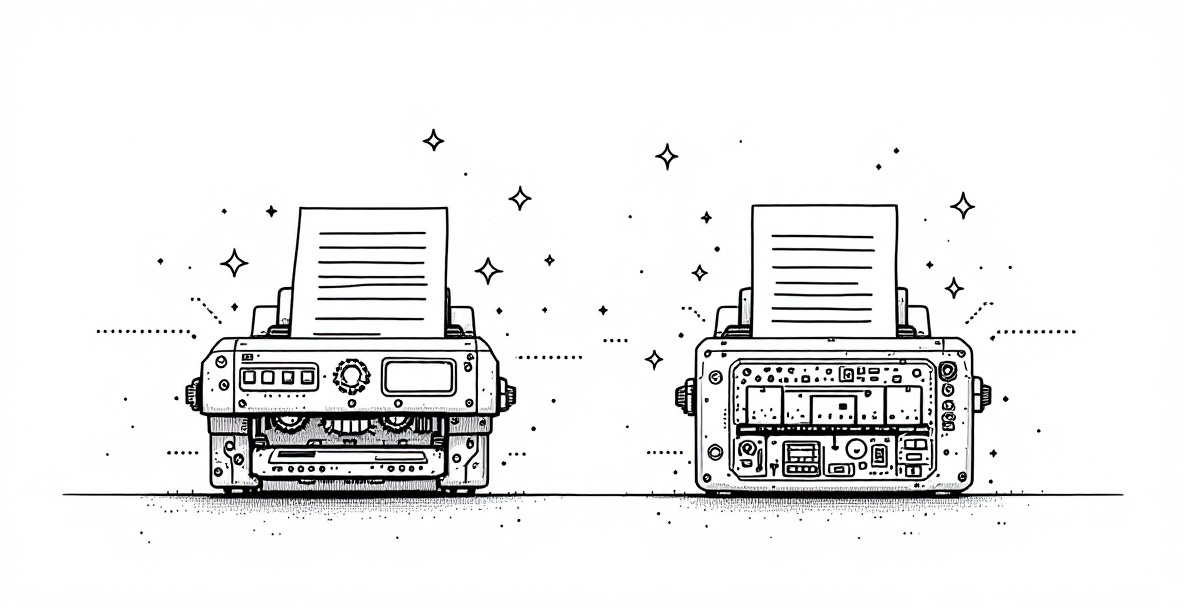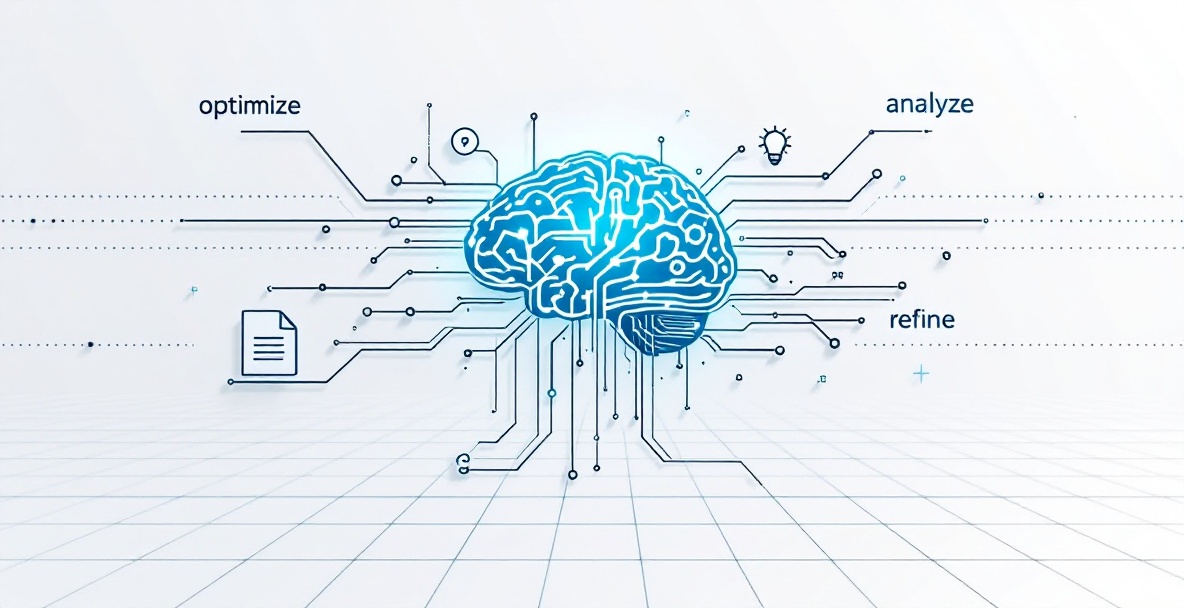The Content Creation Dilemma: Why Generic AI Won't Cut It Anymore
The content creation landscape has transformed dramatically over the past few years. As a content creator or marketing professional, you've likely experienced the pressure to produce more content faster while maintaining quality standards. This challenge has driven many to explore AI-powered solutions, but here's the uncomfortable truth: most generic AI writers are falling short. According to a recent Forbes article on generative AI for content creation, the difference between mediocre, AI-generated content and exceptional, AI-assisted content is growing wider every day, and understanding this gap is crucial for your content strategy's success.
The Content Creation Dilemma: Why Generic AI Won't Cut It Anymore

The promise of AI writing tools was revolutionary: unlimited content at the click of a button. Initially, many businesses rushed to adopt these technologies, seeing them as the ultimate solution to content production challenges. However, the honeymoon phase didn't last long.
The Rise and Fall of Basic AI Writers
When basic AI writing tools first emerged, they seemed miraculous. Feed them a prompt, and they'd generate paragraphs of coherent text in seconds. Content marketers and SEO professionals quickly adopted these tools to scale their operations. The initial excitement was justified – suddenly, producing content at scale became accessible to everyone.
However, as these tools proliferated, their limitations became increasingly apparent. Early AI writers relied on relatively simple language models that could produce grammatically correct text but often lacked depth, accuracy, and originality. They frequently generated content that felt disjointed, repetitive, or generic – the digital equivalent of empty calories.
As search engines evolved, so did their content evaluation algorithms. Google's helpful content update marked a turning point, directly targeting thin, AI-generated content that provided little value to readers. As Search Engine Journal's analysis on generative AI and SEO strategy points out, suddenly, the shortcuts that generic AI tools offered began resulting in penalties rather than rewards.
The Real Cost of Low-Quality AI Content
The consequences of relying on basic AI writers extend far beyond search engine penalties. When you publish subpar content, the damage to your brand's reputation can be substantial and long-lasting. Readers quickly recognize shallow content that fails to address their needs or answer their questions.
Poor-quality content creates a negative impression that's difficult to overcome. Visitors who encounter uninspiring, generic articles are unlikely to return to your site or engage with your brand in the future. This diminished trust translates directly to lower conversion rates and reduced customer loyalty.
The resources wasted on ineffective content add up quickly. Consider the time spent editing and attempting to improve mediocre AI output, the opportunity cost of publishing content that fails to rank or convert, and the potential damage to your domain authority. When factored together, cheap or free AI tools often end up being far more expensive than investing in quality solutions from the start.
What Makes a High-Quality Article Generator Different

The distinction between basic AI tools and advanced article generators lies in their underlying technology, customization capabilities, and quality control mechanisms. Understanding these differences is essential for making informed decisions about your content creation stack.
Advanced Language Models and Training
Premium article generators typically leverage cutting-edge language models that have been trained on vastly larger datasets than their basic counterparts. According to research published on arXiv, these sophisticated models understand context, nuance, and subject matter expertise at a much deeper level, resulting in content that reads naturally and provides genuine value.
At SeoFlow, we've built our platform on advanced language models specifically optimized for long-form content creation. Unlike generic tools that simply predict the next word in a sequence, our models understand narrative structure, topic development, and the principles of effective content marketing. This enables them to create coherent, engaging articles that maintain focus throughout.
The training methodology also differs significantly between basic and advanced AI writers. High-quality generators incorporate fine-tuning on industry-specific content and ongoing reinforcement learning from human feedback. This continuous improvement process ensures that the AI evolves alongside changing content standards and best practices.
Customization and Learning Capabilities
Generic AI tools offer limited customization options, typically restricted to basic parameters like content length or tone. In contrast, superior article generators provide extensive customization capabilities that allow them to adapt to your brand voice, audience preferences, and content goals.
Advanced systems can learn from your feedback and previous content to improve future outputs. This adaptive learning means that the more you use the system, the better it becomes at matching your specific requirements. Over time, this creates a compounding return on investment as the AI becomes increasingly aligned with your content strategy.
What sets SeoFlow apart is our platform's ability to analyze your existing high-performing content and learn your unique brand style. Our AI doesn't just generate generic paragraphs – it studies what works for your specific audience and industry, then applies those insights to create content that feels authentic to your brand.
Quality Control Mechanisms
Perhaps the most significant differentiator between basic and premium AI writers is their approach to quality control. Basic tools typically generate content in one pass with minimal verification, while sophisticated platforms incorporate multi-layered quality assurance processes.
These processes might include fact-checking against reliable sources, plagiarism detection, readability analysis, and SEO optimization checks. Some advanced platforms even incorporate human review at critical stages of the content creation process, combining the efficiency of AI with human judgment and expertise.
By implementing these quality control measures, premium article generators ensure that the content they produce meets professional standards and provides actual value to readers – not just filler text that satisfies a word count requirement.
Choosing the Right Original Content Generation Service

With numerous AI writing solutions available, selecting the right platform for your needs requires careful consideration of several key factors. Here's how to navigate the selection process effectively.
Essential Features Checklist
When evaluating an original content generation service, look for these critical capabilities that separate truly valuable tools from basic text generators:
Content quality and depth should be your primary consideration. The best platforms can produce comprehensive articles that explore topics thoroughly rather than skimming the surface. Test the AI on complex topics in your industry to evaluate its expertise and depth of understanding.
SEO integration capabilities are essential for content that needs to perform well in search. Look for platforms that incorporate keyword research, competitive analysis, and on-page optimization recommendations. SeoFlow's platform automatically analyzes top-ranking content for your target keywords and incorporates proven SEO elements into every article it generates.
Workflow integration represents another crucial factor. The ideal platform should fit seamlessly into your existing content production process, connecting with your CMS, editorial calendar, and other marketing tools. This integration reduces friction and makes adoption much more straightforward.
Learning and adaptation capabilities determine the long-term value of the platform. The best AI writers improve over time as they receive feedback and learn from your preferences. This adaptive capability transforms them from simple tools into valuable collaborators that become increasingly aligned with your content vision.
Red Flags to Watch For
Being aware of warning signs can help you avoid investing in platforms that won't deliver the results you need. Here are key red flags to be wary of:
Generic outputs that read like templates or could apply to any business in any industry indicate an AI that lacks sophistication. Quality AI should be able to create content that feels custom-tailored to your specific niche and audience.
Recycled content that closely resembles existing articles is another warning sign. Some less sophisticated platforms essentially rewrite content from other sources, potentially creating plagiarism concerns and offering minimal unique value.
Limited customization options suggest a platform that won't be able to adapt to your specific requirements. If you can't adjust the AI to match your brand voice, content style, and audience preferences, the resulting content will likely feel disconnected from your other marketing materials.
Poor understanding of complex topics reveals the limitations of the AI's knowledge base. Test any platform with technical concepts relevant to your industry to ensure it can handle specialized subject matter with accuracy and depth.
Price vs. Value Analysis
When considering the cost of AI content generation platforms, it's essential to look beyond the monthly subscription fee and evaluate the total value proposition. This includes both direct and indirect cost savings, as well as potential revenue increases.
Direct time savings represent one of the most significant benefits. Advanced platforms like SeoFlow can reduce content creation time by up to 80%, freeing your team to focus on strategy, creativity, and other high-value activities that AI can't replicate.
Reduced editing requirements also contribute to cost efficiency. While basic AI tools often produce content that requires extensive human editing to reach publication standards, premium platforms generate near-ready content that needs only minimal review and adjustment.
The potential ROI impact is perhaps the most compelling factor. Content that ranks well in search, engages readers effectively, and drives conversions delivers ongoing value that far exceeds its creation cost. When evaluating platforms, consider not just what you'll pay but what you stand to gain in traffic, leads, and revenue.
Maximizing Your AI Article Generator's Potential

Even the most advanced AI requires skilled human direction to produce optimal results. Understanding how to work with AI effectively can dramatically improve your outcomes.
Effective Prompt Engineering
The quality of your prompts directly influences the quality of AI-generated content. Learning to craft effective prompts is a valuable skill that significantly enhances your results when working with AI writers.
Specific, detailed prompts consistently outperform vague requests. Rather than asking for "an article about marketing," specify "a comprehensive guide to email marketing automation for e-commerce businesses, focusing on customer retention strategies." The more context and direction you provide, the more targeted and valuable the resulting content will be.
Including examples of preferred style, tone, and structure in your prompts helps the AI understand your expectations. This might mean sharing links to content you admire or describing the characteristics you want to see in the generated article.
Strategic use of constraints can also improve outputs. When appropriate, specify word count ranges, required subheadings, target keyword density, or other parameters that align with your content strategy. These guidelines help the AI focus its capabilities on your specific needs.
Human Touch Points
While AI can handle much of the content creation process, incorporating human expertise at strategic points ensures optimal quality and effectiveness. This hybrid approach combines efficiency with creative insight.
Editorial oversight remains essential even with advanced AI. Human editors bring critical thinking, subject matter expertise, and creative judgment that AI currently cannot replicate. The most effective content strategies use AI to generate strong drafts that humans then refine and enhance.
Strategic planning and research direction should remain firmly in human hands. AI tools excel at execution but struggle with the strategic thinking needed to determine what content will best serve your audience and business goals. Your team should continue to set the direction while leveraging AI to implement the vision more efficiently.
Personal experiences and original insights add tremendous value to AI-generated content. When editing AI drafts, look for opportunities to incorporate anecdotes, case studies, or perspectives unique to your organization. These elements create distinctive content that stands out from competitors using similar AI tools.
Scaling Content Production
With the right approach, AI can enable significant expansion of your content operations without proportional increases in time or resources.
Establishing content templates and workflows specifically designed for AI collaboration can dramatically improve efficiency. Create standardized frameworks for different content types – such as how-to guides, listicles, or product comparisons – that specify the expected structure and elements. These templates give the AI clear parameters to work within while ensuring consistency across your content library.
Batch processing similar content types together allows you to develop specialized prompts and workflows that improve over time. For example, dedicate certain days to creating product descriptions, blog posts, or social media content, using consistent prompt structures optimized for each content type.
At SeoFlow, we've developed a complete content workflow system that handles everything from idea generation to publishing and promotion. Our platform can automatically research trending topics in your industry, generate optimized content, and schedule publication across multiple channels – all while maintaining your unique brand voice.
The Future of AI-Powered Content Creation
AI content generation is evolving rapidly, with new capabilities emerging regularly. Understanding where this technology is headed helps you prepare for future opportunities and challenges.
Multimodal content creation represents one of the most exciting frontiers. Advanced AI systems are increasingly able to generate not just text but also complementary images, infographics, and even video scripts. This integration creates more cohesive, engaging content experiences that address different learning preferences.
Personalization at scale is becoming more accessible through AI. Next-generation content systems can analyze user data and preferences to create dynamic content that adapts to individual readers. This capability allows for more relevant, impactful content experiences without requiring manual creation of multiple versions.
The relationship between AI and search engines continues to evolve in complex ways. While search algorithms are becoming more sophisticated at identifying AI-generated content, they're primarily concerned with quality and value rather than creation method. Recent research on large language models and search suggests the focus is shifting toward evaluating content based on its utility to readers rather than how it was produced.
Taking Action
The gap between basic and advanced AI content tools continues to widen. Organizations that invest in sophisticated AI partners gain significant advantages in efficiency, quality, and scalability.
Start by evaluating your current content production process, identifying bottlenecks and quality issues that could be addressed with better AI tools. Consider conducting small trials with different platforms to directly compare their outputs and workflow integration.
Remember that successful AI implementation typically requires some adjustment to existing processes. Be prepared to experiment with different approaches to prompt engineering, review workflows, and content templates to find the optimal balance between AI efficiency and human oversight.
Staying Ahead of the Curve
In this rapidly evolving landscape, staying informed about emerging capabilities and best practices is essential. Follow industry publications, participate in content marketing communities, and maintain relationships with technology partners who can provide insights into upcoming developments.
Consider establishing internal knowledge sharing mechanisms to distribute AI expertise throughout your organization. As team members discover effective prompts, workflows, or use cases, capturing and sharing these insights multiplies their value.
The most successful content teams view AI not as a replacement for human creativity but as a powerful amplifier that allows them to focus on strategy, innovation, and creating truly distinctive brand experiences. This perspective enables them to embrace automation while still delivering content that connects authentically with their audience.
The distinction between mediocre and exceptional AI-generated content will only become more pronounced as technology advances. Organizations that invest in quality AI partners and develop the skills to work effectively with these tools will enjoy significant competitive advantages in the evolving content landscape.
Ready to transform your content creation process? SeoFlow offers the advanced AI article generation you need to scale your content production without sacrificing quality. Our platform handles everything from research to publishing while learning your unique brand voice. Try SeoFlow today and discover how our AI-powered solution can save you time while boosting your content's performance.




